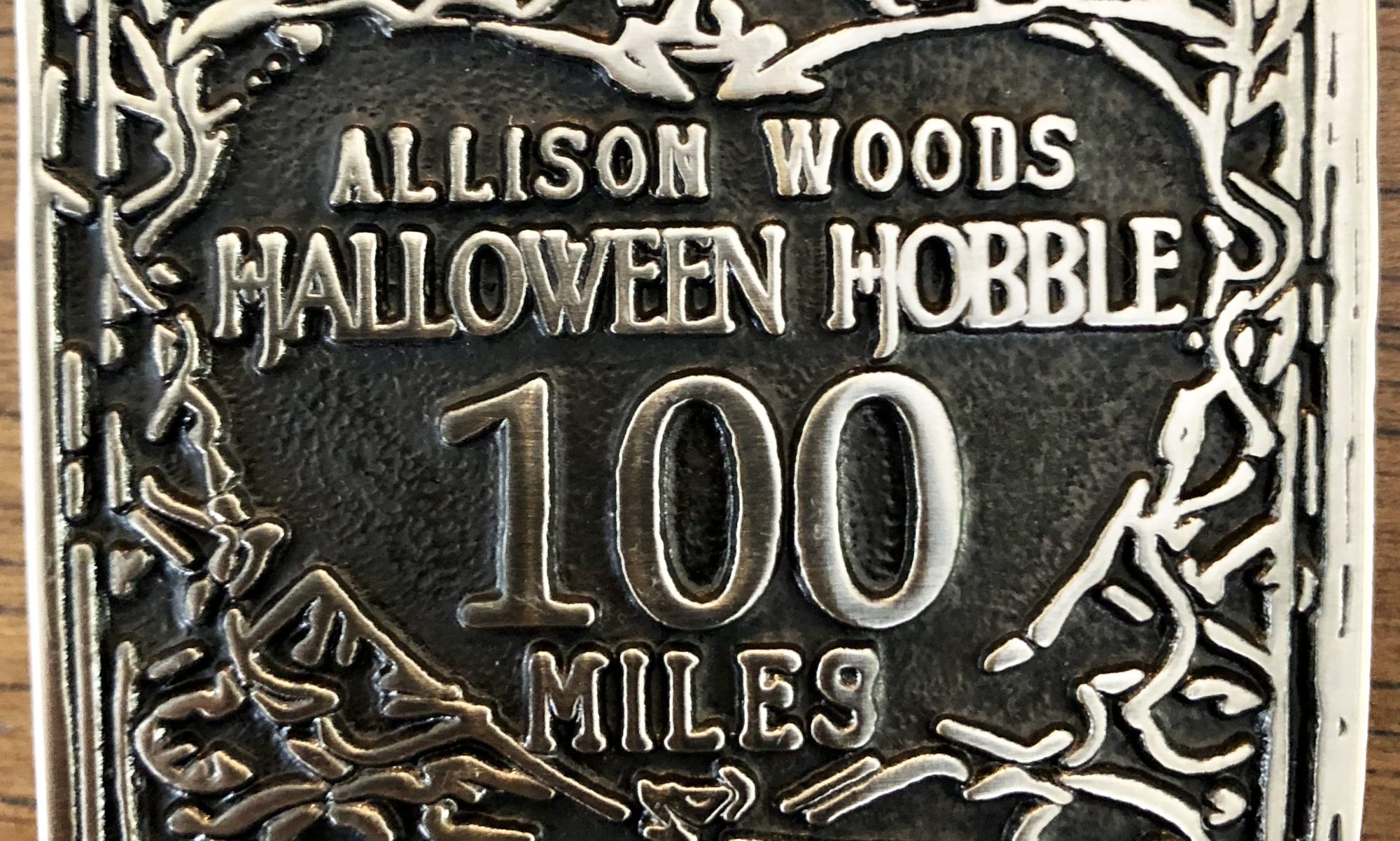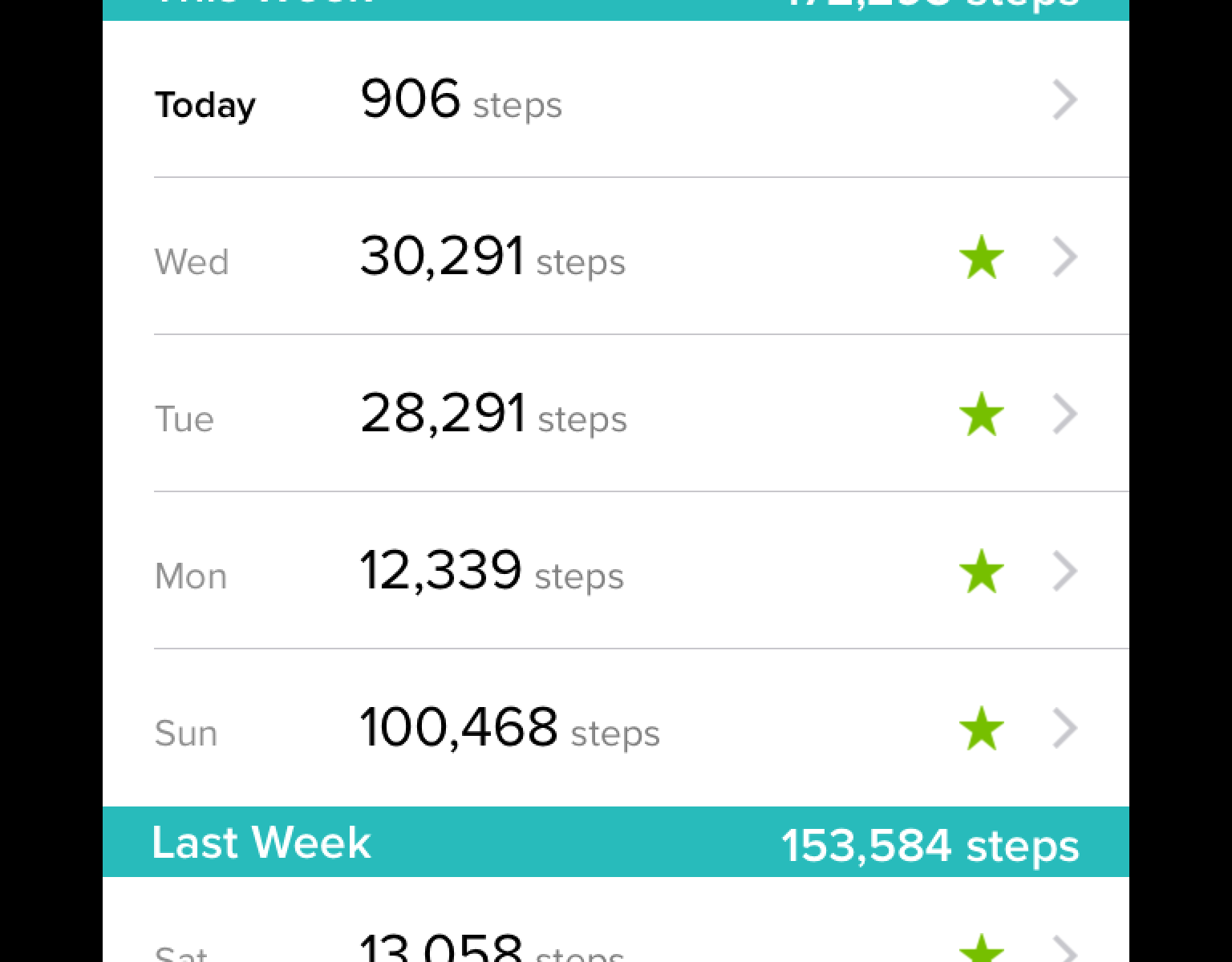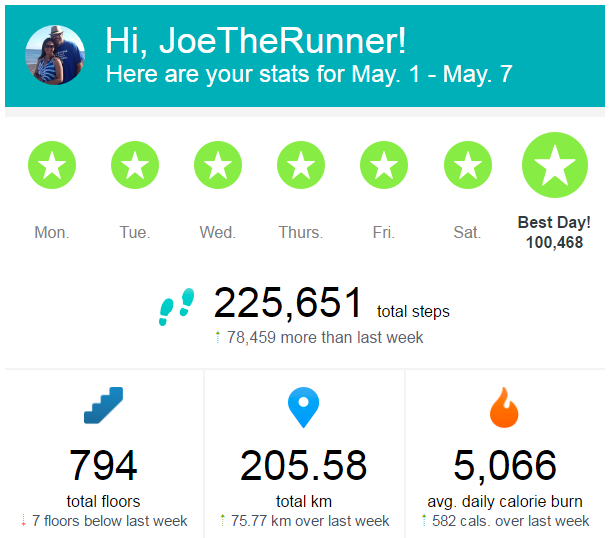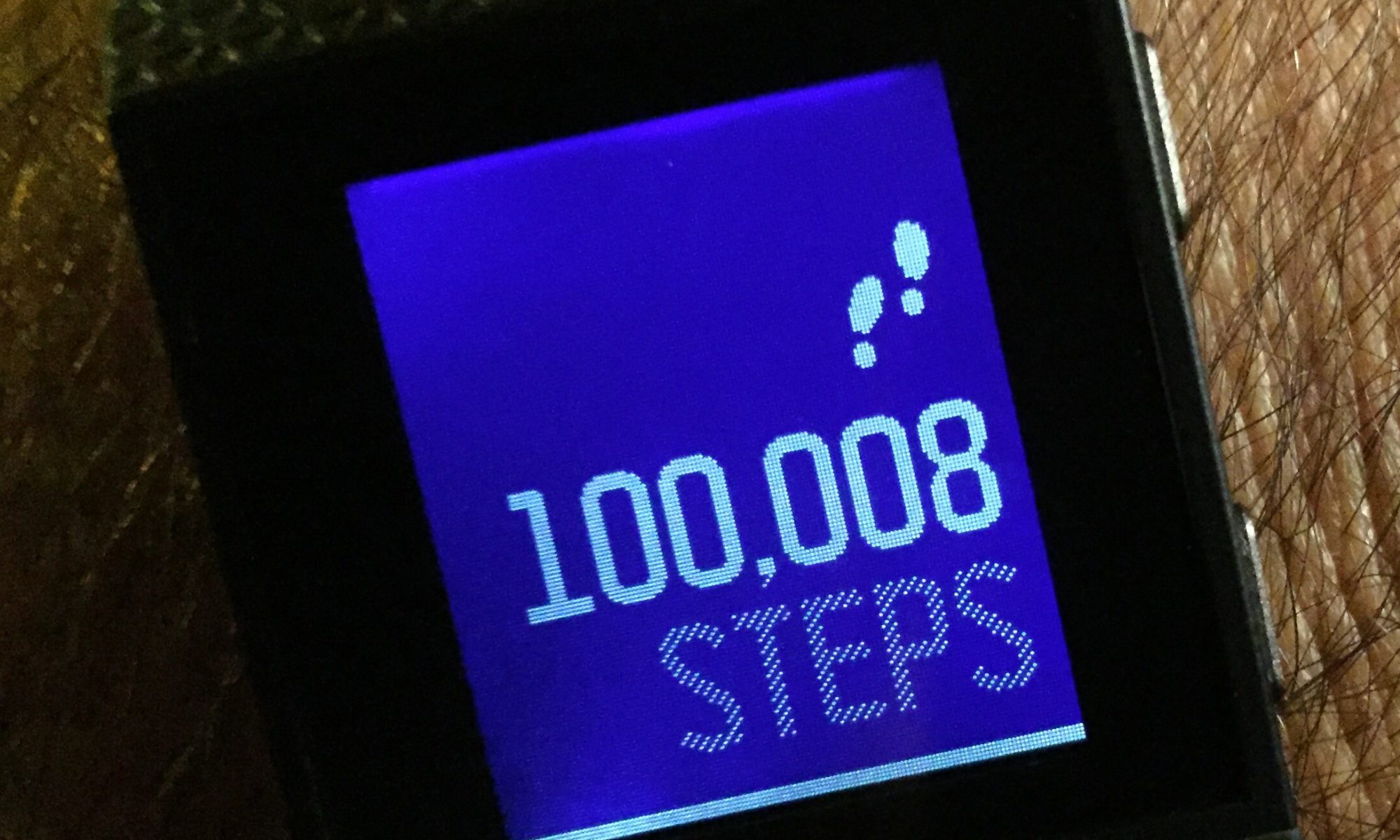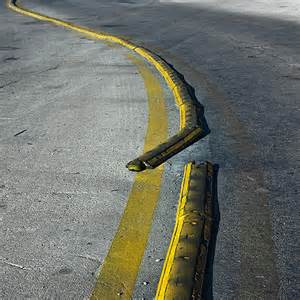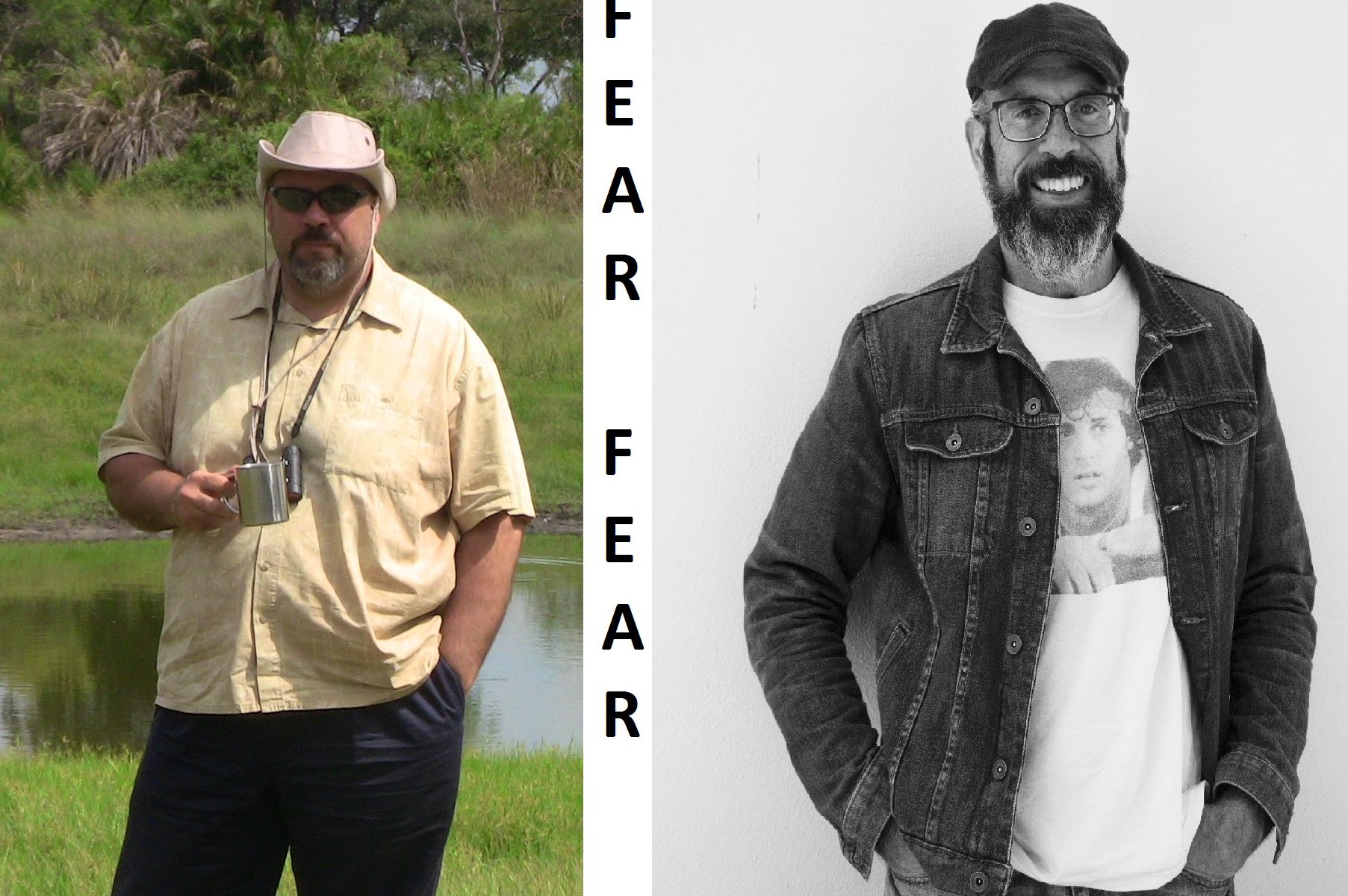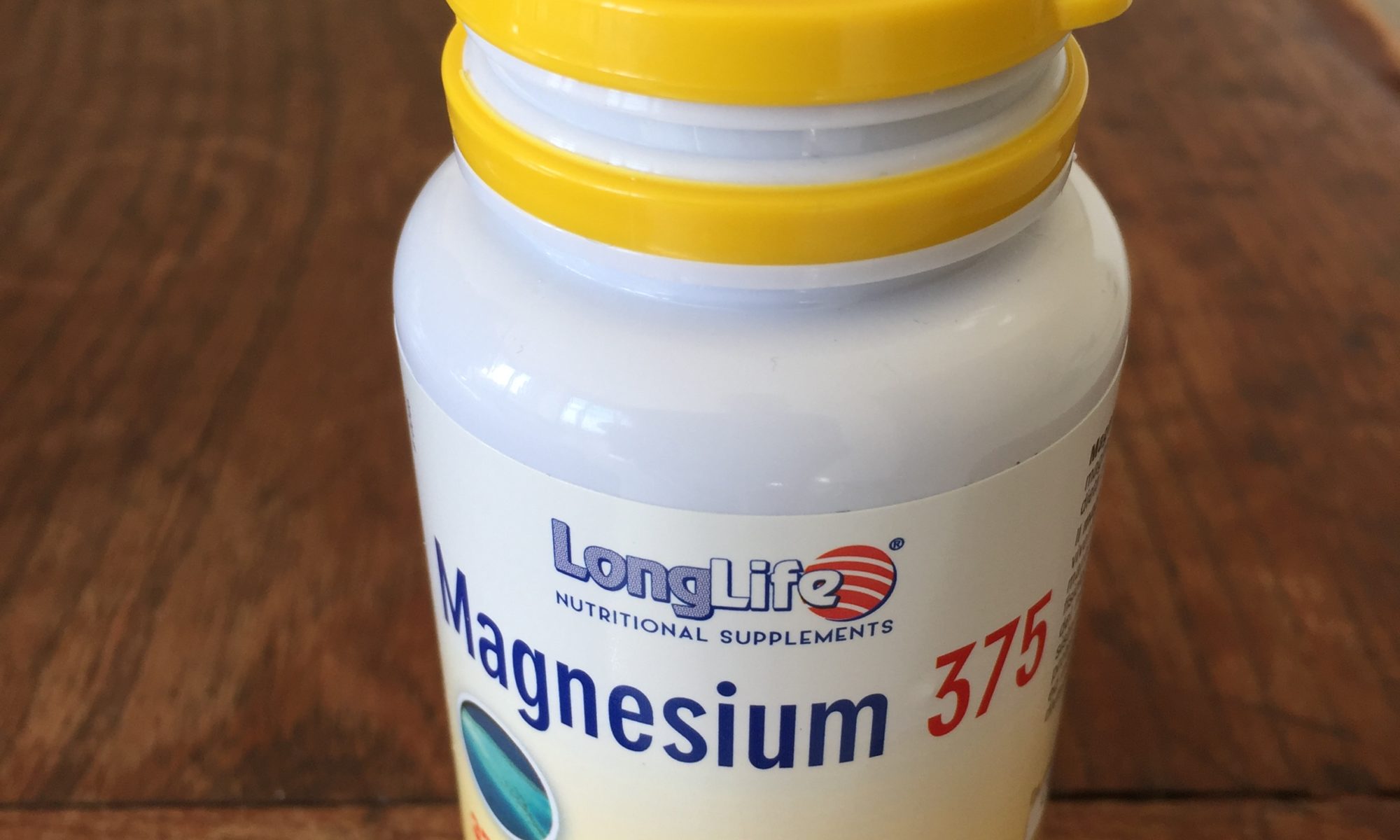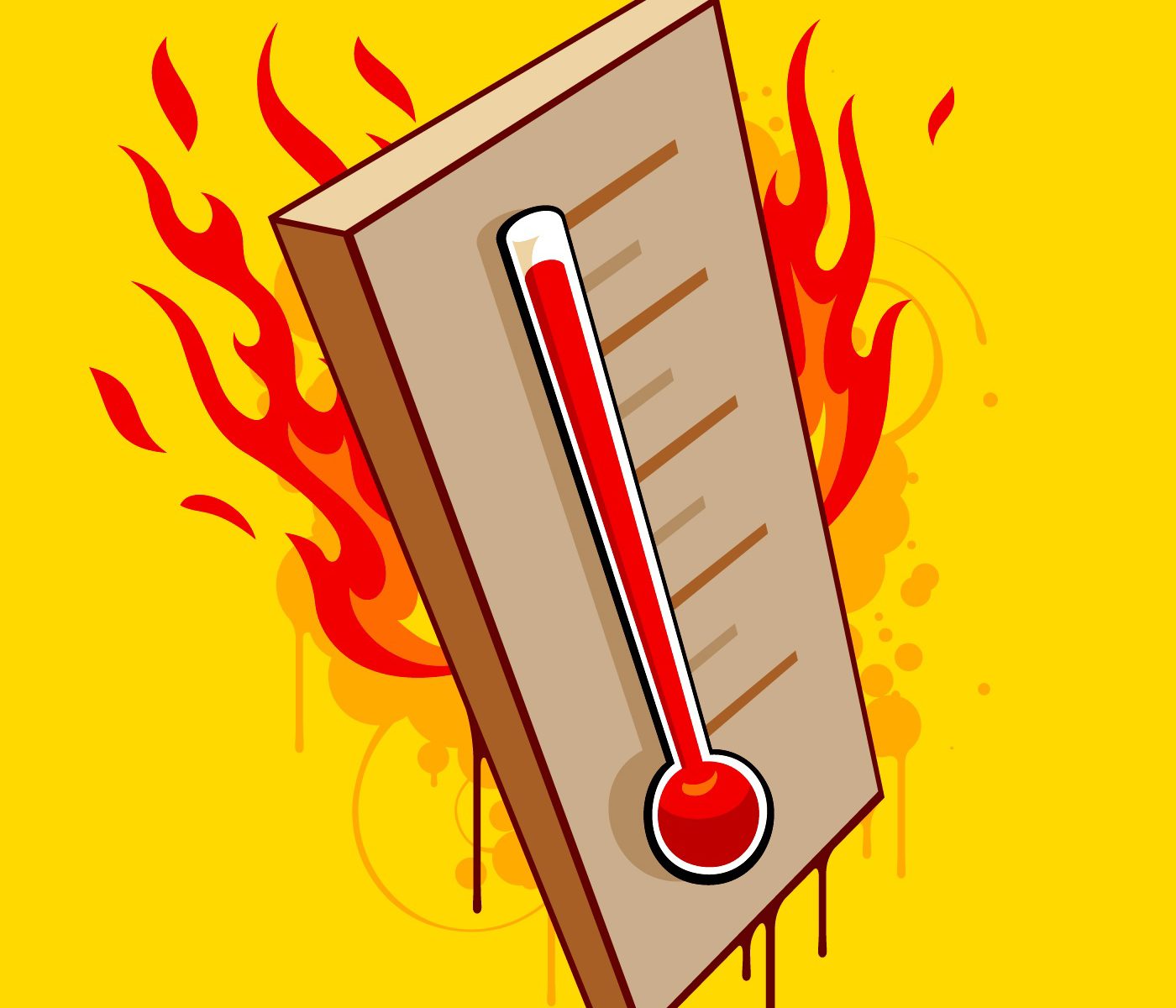Recovery from the 100000 Step Project
First a quick recap of what took place Sunday, I walked/hiked/ran 100000 steps and 56 miles so that I could help people understand what was required to pull off such a feat. Click here to see the 100000 Step Project and related posts.
It is now Thursday, so three days have passed since I finished with the project and my recovery has gone surprisingly well. I want to put some context on this though because I believe that my fitness level for the project was very high as I am training for the Triple Lakes Trail 40 miler. In the nine weeks leading up to this project I had run 346 miles, climbed 31755 feet, and done 8600 push-ups for core work. From that base level of fitness, I believe that my recovery has been aided quite a bit.
To detail the recovery, when I woke up Monday morning, I had tired legs, and both quads were sore, but no worse then I feel after a marathon. On my schedule for the day was NO RUNNING. My preference is always “active” recovery, so I decided to get some walking in throughout the day. I actually finished Monday with 12339 steps and my legs were still tired, but the soreness was subsiding. I also focused on getting fluids in and eating pretty clean. Fruits, vegetables, and lean meats. The types of foods our bodies need to recover; nothing special really.
Tuesday I went for a 5k shakeout run, just to see how it would feel, and to my surprise, I actually had a little zip in my stride. I knocked out the 5k in 24 minutes and 9 seconds feeling pretty good. Then I went downtown to visit with friends and decided to walk the whole time. I finished Tuesday with 28291 steps still feeling pretty good. Again, nutrition was clean eating mostly, nothing special.
Wednesday I wanted to add a little distance and a little vertical climbing, so I did 10k at an easy pace with about 800 feet of climbing. The run went well and I felt comfortable but slow. I clicked off the 10k in 56 minutes and 52 seconds on tired legs. Again, I went downtown in the evening and decided to walk resulting in 30291 steps for the day. Regardless, I feel really good about where I am right now, no pain, slowly starting my running back up, and tired legs. All to be expected after Sunday’s huge day.
That’s it. You have all the posts in regards to the 100000 Step Project. The plan, the details of the day, the nutrition, and the recovery. If any one still believes that people are just pushing out 60000 to 100000 steps a day after they get home from work, read all of this again. It is not a realistic and sustainable goal for normal people and it borders on dangerous! Work your plan and improve on yourself. If you want to work your ways up to ultra marathon distances, take the time to learn and do it safely. Broken record time, 10000 to 15000 steps is achievable and sustainable for normal folks and will greatly improve your fitness. For us crazy runners, 20000 to 30000 are achievable and sustainable. If you are a little obsessive, I’ll even give you 30000 to 40000 steps a day. Above that… it starts to get very fishy!
I want to thank EVERYONE for all of the love and support during this process; it has been overwhelming and humbling! Peace. Joe the Runner
I hope that this post and this blog helps you achieve your dreams! To receive new post notifications, newsletters, and post previews, please SUBSCRIBE!
For behind the scenes photos and comments on my training and personal life, follow me on Instagram: joe_the_runner Strava: Joe Randene
Questions, comments, feedback? Please leave them in the comments section BELOW and we can have a discussion!
Nutrition for the 100000 Step Project
100000 Step Project Segment by Segment -Holy Crap That’s A Lot of Steps!
3 Major Fitness Interrupters
An Interview with Joe the Runner
Joe the Runner Interview on CEM-Mind Body and Soul TV
Hell Yes it’s Embarrassing to Be a New Runner!
“Everything you ever wanted is on the other side of fear.” George Addair
I read a comment the other day “I have never been a runner but I am thinking that I might want to start. However, I feel a little awkward and silly. Does anyone else feel this way?” Man, when I saw this it hit me right in the heart! YES!!! I would bet that almost all new runners feel this way. I mean, think about it, most adults that start the sport do it as part of a weight loss program, so if you are like me, then you probably started running in whatever clothes you had laying around that were comfortable, no REAL running shoes, slow as a turtle, stopping to walk, AND huffing and puffing… loudly with snot everywhere! YES!!! I have been there. BUT, so have a lot of runners that you pass and I’ll tell you what, when I see someone who is obviously new to the sport and out there struggling, I always smile at them and tell them “Great job!”
My personal experience has been that the running community is one of the most supportive and positive communities out there. When I am at a race or meet a fellow runner somewhere, there is that instant connection. What we do is not easy, but the rewards are AMAZING, so we all need that support. I have not experienced a negative comment, from another runner, ever. We are all in this together and we are all here to help.
I promise you that if you stick with it and be patient and kind with yourself, it will slowly get easier and easier. If you are getting out there and running very slowly four or five times a week, your body will adjust. Your heart will get stronger and your breathing will get easier. If you start to make small changes to your nutrition, you will lose weight, and the next thing you know, you’ll be buying stuff made of lycra! Crazy! I know. I own way too much lycra, it’s not pretty…
Believe me, I understand that you are pushing yourself way outside your comfort zone, but if you can push past your fears the rewards that you are looking for are right there! If the person who wrote that comment reads this, you know that I am here to cheer for you and provide you support. I am proud of you! If you are asking me, yes, start running. It just may change your life. God knows it changed mine completely.
I hope that this post and this blog helps you achieve your dreams! To receive new post notifications, newsletters, and post previews, please SUBSCRIBE!
For behind the scenes photos and comments on my training and personal life, follow me on Instagram: joe_the_runner Strava: Joe Randene
Questions, comments, feedback? Please leave them in the comments section BELOW and we can have a discussion!
THE Magic Bullet for Leg Cramps
Even before I started running, I’ve always had issues with cramps, particularly in my calves, hamstrings, and quads. I have very muscular legs and it has just always been an issue. There have been many nights where I wake up screaming in pain because of a leg cramp, scaring the crap out of my wife and obviously disturbing our rest.
When I was preparing for my first half marathon, a friend that I work with who is also a runner and has a lot more experience then I do, offered me some advice on preventing cramps. He knew that I was suffering later in my long runs and he also had similar issues. His advice was to start taking a magnesium supplement. A running friend of his offered him the same advice, and he told me that for all intents and purposes, his cramping issues had been resolved.
If you have cramp issues like I do, then you know you’re willing to try anything. I consulted the pharmacist and they started me out with 200 mg’s of magnesium a day and it made a world of difference! I was amazed. Almost immediately my cramping issues improved. Since I am always increasing my distance, I needed to keep tweaking the dosage until I found the right amount that basically stopped my cramping issues altogether. For me, that is 375 mg’s every day. Basically up to marathon distance, I no longer have cramping issues! Past 26 miles, I am still experimenting with doses, but give it a try.
If I am having a big week of training, I might supplement the 375 mg’s with another 50 to 100 mg’s or try increasing my food intake with magnesium rich foods. Foods that have worked well for me are dark green leafy vegetables, dates, figs, nuts and seeds, and bananas; if you google magnesium rich foods, there are a ton of suggestions.
Other fundamental nutritional aspects that you need to make sure you are taking care of in order for the magnesium to help are hydration and sleep. If you stay properly hydrated by drinking plenty of water and make sure that you are getting plenty of sleep, I suggest at least 7 hours per night if you can get it, then the magnesium can do its job. A thumb rule in regards to how much water to drink is that the color of your urine should be like pale wheat. Darker then that and you are dehydrated and lighter then that and you are drinking too much water.
A couple of other things that have helped me are foam rolling and compression socks. I try and get two sessions a week on the foam roller for my legs and I wear compression socks during my runs and for 30 minutes to an hour after. I am no doctor, so what I’ll say about the compression socks is that I feel supported and I feel like they make a difference. And like so many things in our sport, sometimes it really comes down to if you think it helps; then it helps.
If you increase your magnesium and it solves your cramping issues, I would love to hear about it! Post it in the comments section below!
I hope that this post and this blog helps! To receive new post notifications, newsletters, and post previews, please SUBSCRIBE!
For behind the scenes photos and comments on my training and personal life, follow me on Instagram: joe_the_runner Strava: Joe Randene
Questions, comments, feedback? Please leave them in the comments section BELOW and we can have a discussion!
5 Ways to Cope with the Impact of Heat on Your Running
I have recently noticed an increase in people on Strava, Fitbit, and Instagram, saying that they have cut their runs short because they felt completely drained for some reason. My best guess is that as spring is turning to summer, people are not aware of what a little heat and humidity can do to you while you are on your runs. And by a little heat, I am talking in excess of 65 degrees F.
Above this temperature your body works harder to get oxygen to the muscles during strenuous activities. Basically, something has to give. You either intentionally slow down so that you can run longer or you try and maintain your normal splits, and you have a much more difficult time of it! You will either slow down unintentionally, or you will cut your run short. But don’t fret, after a couple of weeks of running in increased heat, your body will start to adjust and you will feel a little more like your normal self. And, I have found that if I am training in heat and then race in a cooler environment, it helps a whole bunch!
Here are some tips for minimizing the impact of the heat:
1. Run early or late, when the hottest part of the day has not been reached or has already passed.
2. Find a really nice shaded path to run, such as parks or trails. A couple of degrees will make a big difference. The rule of thumb often quoted is your pace will slow about 20 seconds per mile for every 5 degrees increase above 65.
3. Stay hydrated before, during, and after your run. This is key! Drink lots of water and electrolytes. Keep your urine the same color as pale wheat.
4. Run in clothing that allows for your body to stay cool and wear as little as possible.
5. Plan on going at a slower pace and know that you are still getting a quality work out in.
There is another way, but I hate to suggest it. You can always run on a dreadmill. That’s right; I call it a DREADMILL, because I find them so boring. But they do have a place in our sport…
I always struggle with the heat too because I hate seeing those slower splits, but it comes with the territory. As your body adjusts, it will become more efficient at delivering that oxygen to your muscles, and that is a great thing for us runners! Sometimes you have to slow down a little to speed up!
I hope that this post and this blog helps! To receive new post notifications, newsletters, and post previews, please SUBSCRIBE!
For behind the scenes photos and comments on my training and personal life, follow me on Instagram: joe_the_runner and Strava: Joe Randene
Questions, comments, feedback? Please leave them in the comments section BELOW and we can have a discussion!
5 Great Reasons to Schedule Rest Days
Body
We put our bodies through a lot. A typical week, if I am training for a marathon, might look like this: 45 miles, 1500 push-ups, and 4000 feet of vertical climbing. Taking a rest day allows our bodies to recover and rebuild those muscles that we are always tearing down. It also helps with niggles, soreness, and injury prevention which all help to make us better runners!
Mind
It’s often overlooked, but all of the training we do takes a toll on our minds too. There is always the stress of fitting our workout in around obligations and then, when we are working out, we’re thinking about form, cadence, speed, etc. A complete day of not running gives our minds time to relax and reflect on what we are doing with our training, providing us with the opportunity to make adjustments in an objective way. Then when we go out for our run the next day, we can attack it with a fresh mind!
Time
Scheduled rest days are the perfect opportunity to catch up on errands or spend time with family. The days that we train can be very busy with our normal lives and running being squeezed in to windows of time that include work and other commitments. On rest days, I will literally schedule a date with my wife or some time with my kids.
Taking Care of Yourself
If you’re like me, the first thing that I give up on if I get too busy is doing the small things that will help me prevent injury and feel better in general. Things like light core work and foam rolling. Scheduled rest days are great opportunities to get a great session of foam rolling in or maybe even some yoga.
Guilt Free Recovery
This may be the best reason of all to schedule rest. Since it’s absolutely necessary, I make it a part of my training plan, therefore I don’t feel any guilt when I take them. I’m not sure who said it, but there is a saying that goes something like this “You know you caught the (running) bug when you have to be disciplined to take a day off.” That pretty much says it all.
I hope that this post and this blog helps! To receive new post notifications, newsletters, and post previews, please SUBSCRIBE!
For behind the scenes photos and comments on my training and personal life, follow me on Instagram: joe_the_runner
Questions, comments, feedback? Please leave them in the comments section BELOW and we can have a discussion!
